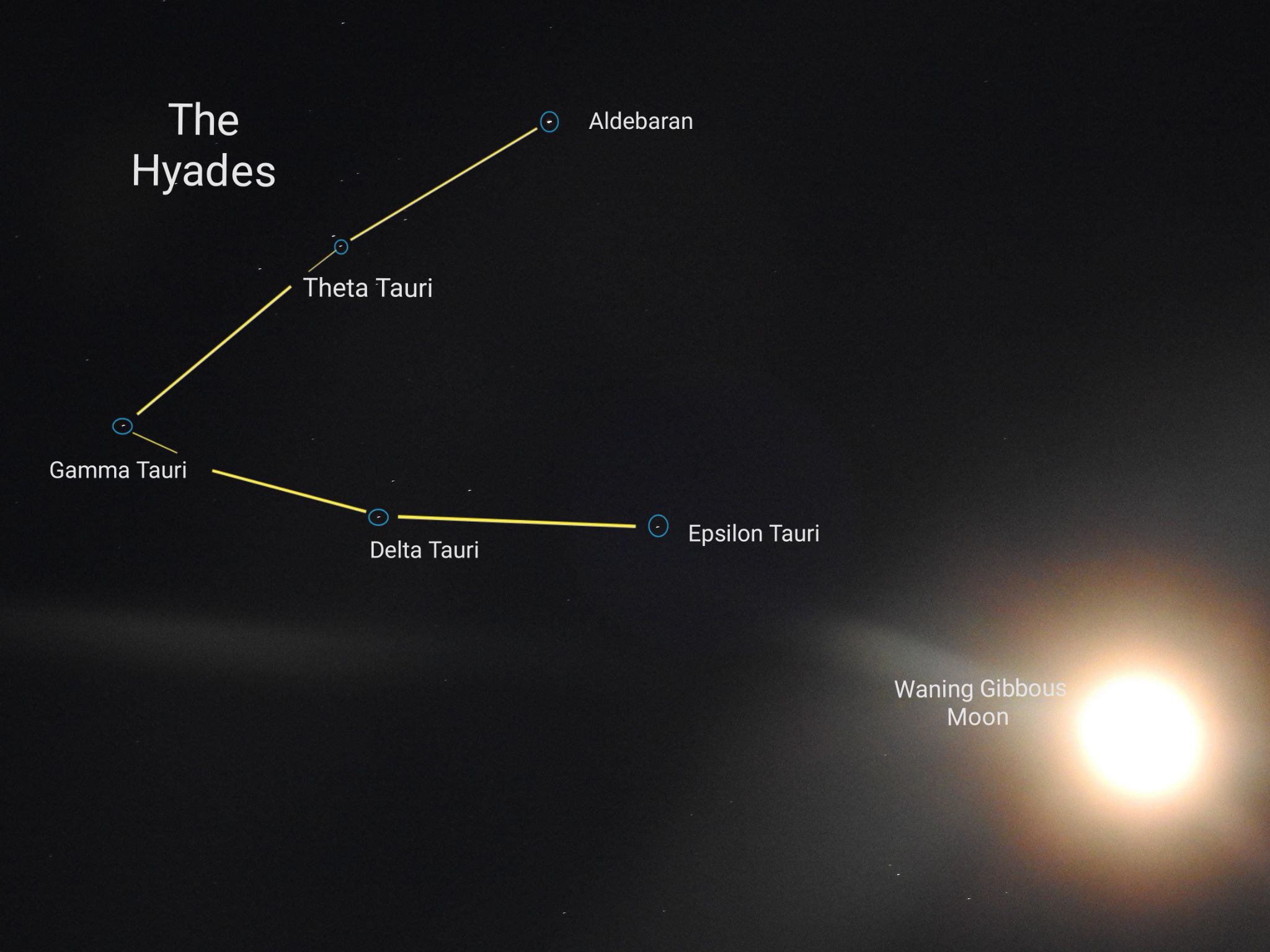EarthSky Community Photos
Submit your photo here. Comment or upvote on photo pages. Search via photographers' names. More improvements coming! To help, please donate.

Singapore
06:23 am
Nikon Coolpix P900
I took these photos in the morning of 27 September, 2021 at about 6.25 am. The waning gibbous moon was seen with one prominent asterism (The Hyades star cluster) in the Northern Hemisphere during this period where Singapore lies. Since I only use the auto mode function of the camera, the moon details could not be seen as I wanted and it was too glaring in the photograph. My intention was to picture the Hyades with the moon, though the Pleiades was also visible to the left of the Hyades which is not shown in this photograph.
According to Wikipedia, the Hyades Cluster includes the 4 brightest stars in the "V" shaped head of Taurus. These stars, designated Gamma, Delta, Theta, and Epsilon Tauri, are all very close together (only a few light years apart). Aldebaran, however, is much closer to Earth - although it appears to line up with the other stars in the "V" shaped asterism. Epsilon Tauri, known as Ain (the "Bull's Eye"), has a gas giant exoplanet candidate, the first planet to be found in any open cluster.
The age of the Hyades is estimated to be about 625 million years. The core of the cluster, where stars are the most densely packed, has a radius of 8.8 light-years (2.7 parsecs), and the cluster's tidal radius – where the stars become more strongly influenced by the gravity of the surrounding Milky Way galaxy – is 33 light-years (10 parsecs). However, about one-third of confirmed member stars have been observed well outside the latter boundary, in the cluster's extended halo; these stars are probably in the process of escaping from its gravitational influence.








